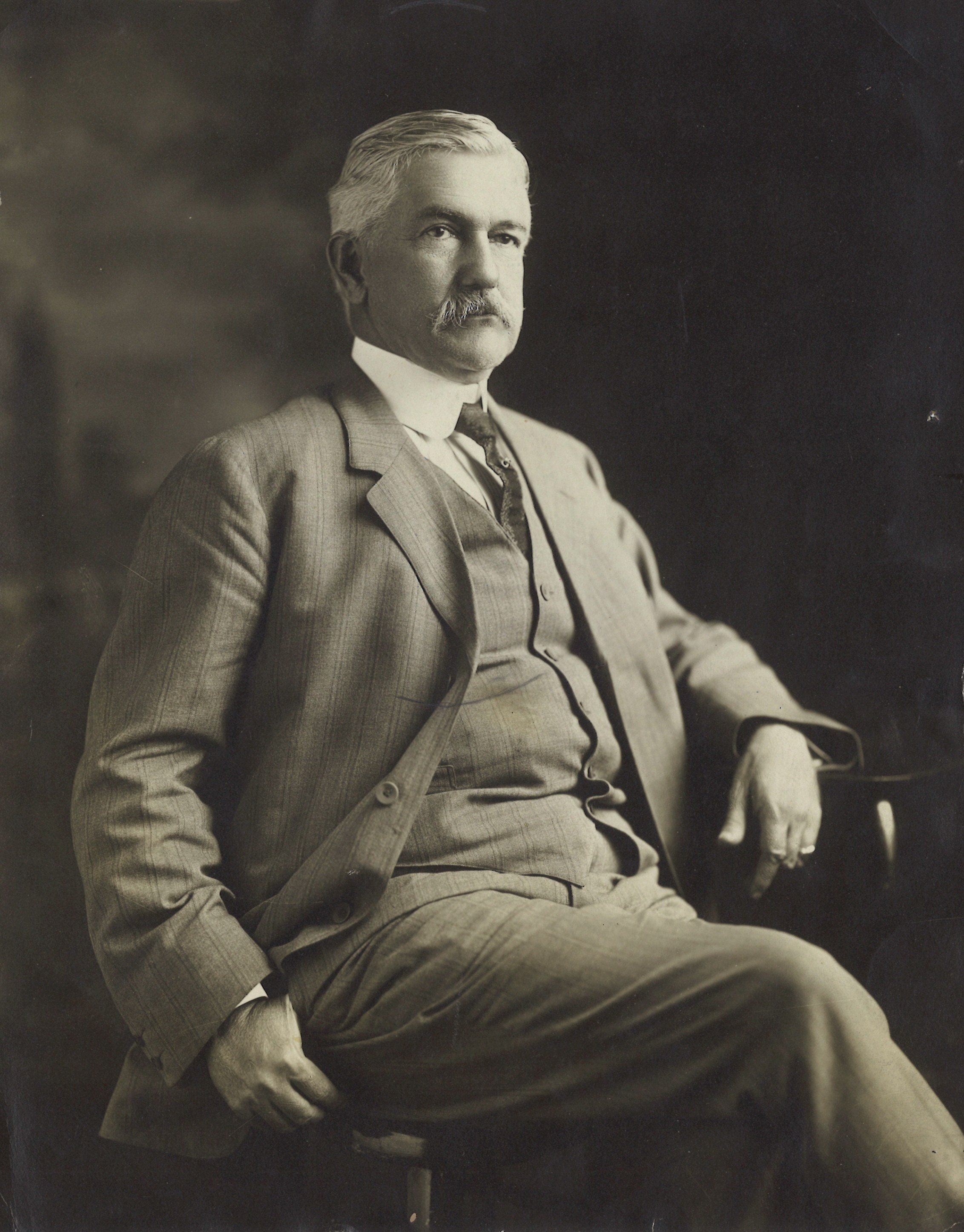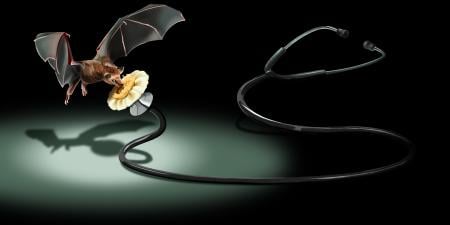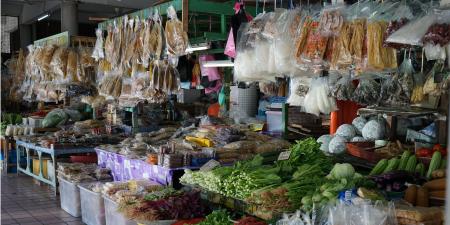Abstract
At the turn of the 20th century, the physician William Gorgas led work that substantially mitigated mortality from mosquito-borne diseases among workers building the Panama Canal. The waterway launched the United States to political and economic superpower status by eliminating the need for risky maritime travel around the southern tip of South America, expediting exportation of US goods in international markets. Yet, as this article explains, innovations that curbed malaria and yellow fever were deeply rooted in racist foundations of capital and empire.
Conquest and Illness
During the late 19th and early 20th centuries, the United States looked to more extensively colonize the Caribbean and Pacific. The US victory in the Spanish-American War of 1898 compelled Spain to relinquish control of several territories, including Cuba. It was there that Drs Carlos Finlay, Walter Reed, and others proved that mosquitoes spread diseases. Acting on behalf of the US government in 1901, Dr William Gorgas campaigned to rid Cuba of mosquito-borne yellow fever, which was eliminated in Havana in 3 months.1
Based on the mosquito vector theory promoted by Finlay, Reed, and Dr Ronald Ross, Gorgas devised and led implementation of mosquito management strategies that facilitated the United States’s role in the building the Panama Canal and in what Gorgas phrased as “conquest of the tropics for the white race.”2 Gorgas’s racism is rarely discussed, but this article examines key ways in which his work on yellow fever and malaria perpetuated colonialism and white supremacy and was used to justify deep exploitation of Latin Americans and their lands.
Figure. Portrait of William C. Gorgas, Harris & Ewing, 1920

Reproduced from World’s Work.3
Panama
Many tropical nations’ ecological conditions exacerbate mosquito-borne disease incidence and prevalence. Panama’s location between North and South America and between the Atlantic and Pacific Oceans, as well as visits from international investors looking to exploit its resources and global commercial value, geographically and historically positioned Panama to endure 400 years of yellow fever epidemics.1 By the turn of the 20th century, Panama was weakly governed and believed by many to be indebted to the United States for support of its independence from Spain.4 President Theodore Roosevelt seized on building the Panama Canal to showcase the United States’ growing dominance in the western tropics. If the United States could conquer disease in Panama, it was thought, it would be closer to financially, technologically, and scientifically overpowering Europe on the global geopolitical stage.5
Prior to mosquito vector theory, Panama’s ecology was reputed to be a “miasma” rife with “bad air,” an untamed place hostile to White habitation.6 A prominent 20th-century French engineer described Panama’s climate and environment as “literally poisoned,”6 which was thought by some to explain Indigenous Panamanians’ alleged racial inferiority to persons in the Global North.6 Notably, in the 1880s, the French tried to build a canal in Panama but were thwarted by French engineers’ and Caribbean laborers’ deaths from yellow fever and malaria. Strangely, US officials believed these diseases posed no risk that a “clean, healthy, moral American” could not solve.7 Gorgas’ mosquito elimination plan involved destroying mosquito breeding habitats, installing nets and screens, and dispensing quinine, but it was not immediately successful.8 About 6 months after US workers’ arrival on the isthmus, many died; a yellow fever epidemic had begun by November of 1904, causing the panic and flight of nearly three-fourths of US canal workers by January 1905.1
In many ways, infrastructure, such as hospitals and rail lines, built to support construction of the canal thwarted mosquito elimination. Prior to the 1904 to 1905 outbreak of yellow fever, the French, for example, built a then-state-of-the-art hospital to care for sick workers. But when French hospital workers, besieged by ants, placed bowls of water to drown them, the water became stagnant sites that nourished the hatching of mosquito larvae.9 As US entomologist August Busck wrote: “[T]he progress of each steam shovel or of each of the extensive dumps produce[d] new [water drainage] problems.”10 Gorgas wrote in a 1907 Journal of the American Medical Association article that “if the conditions as they existed in 1905 were to continue, the canal would never be finished.”11 Control of mosquito-borne illness would require more funds and expanded oversight. At the request of Secretary of War William Taft,3 then-American Medical Association President Dr Charles Reed guided production of a report on Panama that resulted in those 2 things. By spring of 1905, Gorgas would oversee the most expensive public health campaign up to that time in American history.1
Tropical Living as Healthy, Manifest Destiny
“The spread of civilisation,” Gorgas believed, “is supposed to bring with it not only good ruling and justice, but also increased health and happiness. Apart from this moral aspect, it seems obvious, from a business point of view, that the opening up of the resources of an unhealthy country will never be a full success until that country is rendered healthy.”12 Public health and sanitation efforts in the United States focused almost exclusively on areas inhabited by White people, while Black, Asian, and Indigenous workers were left vulnerable to diseases under better control in many White communities. This inequity was exacerbated in “tropical medicine” when used to illustrate minoritized workers’ alleged laziness and lack of hygiene that was, according to racial essentialist conceptions of contagion, causing diseases to spread. The racial essentialism expressed in tropical medicine justified displacement of Indigenous people living in tropical regions of the world and White people’s conquest and occupation of their lands. According to this logic, White people were thought to be more suited to the tropics than Black, Brown, and Indigenous people because “As it becomes generally known that he [the White man] can live in the tropics and maintain his health, necessarily a large emigration will occur from the present civilized temperate regions to the tropics.”6 That is, it was not enough for a colonial power like the United States to extract natural resources from a place like Panama. Rather, “civilizing” the world required supplanting populations and rebuilding.
A public relations campaign launched by President Roosevelt was designed to introduce the world to a United States in control of its destiny, giving credence to the idea that “a technological mastery of nature helped define a nation’s level of civilization.”6 It also reified the alleged supremacy of White people and underscored the alleged “languor” and “inefficiency” of minoritized peoples, which were believed to be inherent rather than “the inevitable concomitants of hot weather and tropical conditions generally.”13 As the chief of the US Bureau of Entomology wrote in an introduction to a book published in 1916, mosquito control in Panama was “an object lesson for the sanitarians of the world and has demonstrated the vitally important fact that it is possible for the white race to live healthfully in the tropics.”6
Gorgas confidently envisioned that “within the next two or three centuries, tropical countries, which offer a much greater return for man’s labour than do the temperate zones, will be settled up by the white races, and that again the centres of wealth, civilisation and population will be in the tropics, as they were in the dawn of man’s history, rather than in the temperate zone, as at present.”11 In fact, he was known for his sweeping representation of the course of human progress in relation to climate and disease: “Clothing and fire, according to Gorgas, allowed the ‘most vigorous and healthy races, mentally and physically’ to migrate to temperate climates and escape the diseases which flourished in the tropics.”14 Only the “sanitary discoveries” of the early 20th century would allow the White man “to return from the temperate regions to which he was forced to migrate long ago, and again live and develop in his natural home, the tropics.”14
Myths of tropical living as White destiny were also expressed in a 1906 speech by Roosevelt to Congress in which he said that sanitation officials in Panama should be “entitled to the same credit that we would give to the picked men of a victorious army.”15 Although Gorgas’ success in controlling yellow fever and malaria was crucial to advancing the field that became known as tropical medicine and to completing the Panama Canal, it was also used to justify continued usurpation of Latin Americans’ and Indigenous peoples’ lands. As this article suggests, Gorgas’ work should now be contextualized in a broader narrative of Western dominance and colonialism.
References
- Freeman AH. The mosquito of high crimes: the campaign against yellow fever during the American construction of the Panama Canal, 1904-1905. Hist Med. 2011;2(1):1-9.
- Gorgas WC. The conquest of the tropics for the white race: president’s address at the sixtieth annual session of the American Medical Association, at Atlantic City, June 9, 1909. J Am Med Assoc. 1909;52(25):1967-1969.
-
The march of events. World’s Work. 1920;40(2):106-126.
-
Office of the Historian. Building the Panama Canal, 1903-1914. US Department of State. Accessed May 5, 2023. https://history.state.gov/milestones/1899-1913/panama-canal
-
Rhoads S. Regulating Death and Building Empire: American Doctors and the Construction of the Panama Canal, 1904-1914. Bachelor’s thesis. University of Richmond; 2012. Accessed March 1, 2023. https://scholarship.richmond.edu/cgi/viewcontent.cgi?referer=&httpsredir=1&article=1066&context=honors-theses
- Sutter PS. Nature’s agents or agents of empire? Entomological workers and environmental change during the construction of the Panama Canal. Isis. 2007;98(4):724-754.
-
McCullough D. The Path Between the Seas: The Creation of the Panama Canal, 1870-1914. Simon & Schuster; 1997.
-
Leonard J. William Gorgas, soldier of public health. Bull Pan Am Health Organ. 1991;25(2):166-185.
-
TR and the Panama Canal. PBS. Accessed September 8, 2023. https://www.pbs.org/wgbh/americanexperience/features/TR-panama/
-
Busck A. Report on a trip for the purpose of studying the mosquito fauna of Panama. Smithson Misc Collect. 1908;52:49-77.
- Gorgas WC. Sanitation in the Canal Zone. J Am Med Assoc. 1907;49(1):6-8.
- Thomson D. Sanitation in the tropics, with special reference to the Panama Canal Zone, Trinidad, and British Guiana. Trans R Soc Trop Med Hyg. 1913;6(6):183-215.
-
Gibson JM. Physician to the World: The Life of General William C. Gorgas. University of Alabama Press; 1989.
-
Parker JW. Sexual angst of empire: race, manliness, and prostitution on the Panama Canal, 1914-1921. Paper presented at: ILASSA Conference; February 7-9, 2008; Austin, TX. Accessed March 2, 2023. http://lanic.utexas.edu/project/etext/llilas/ilassa/2008/parker.pdf
-
Roosevelt T. December 17, 1906: Message regarding conditions in Panama. Accessed May 5, 2023. https://millercenter.org/the-presidency/presidential-speeches/december-17-1906-message-regarding-conditions-panama



